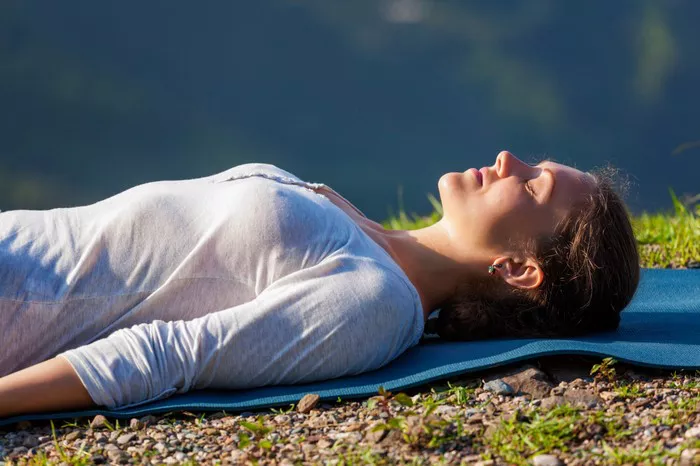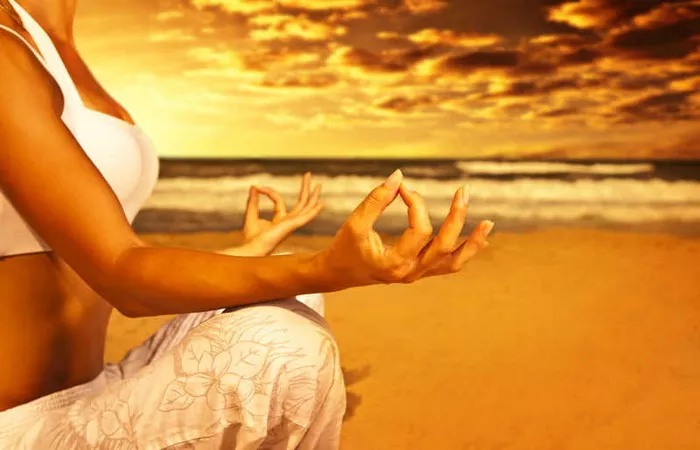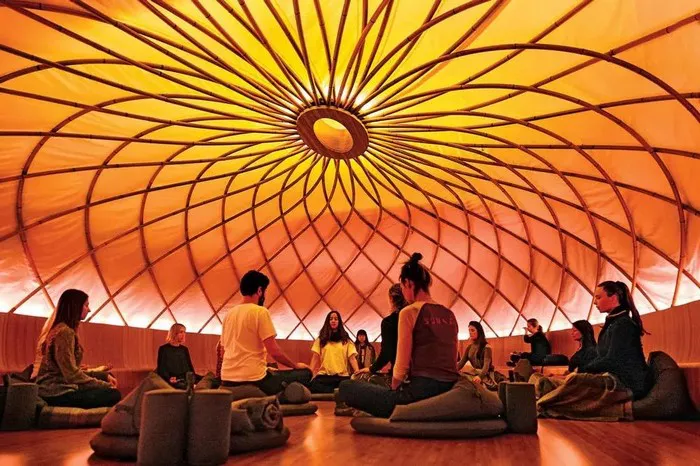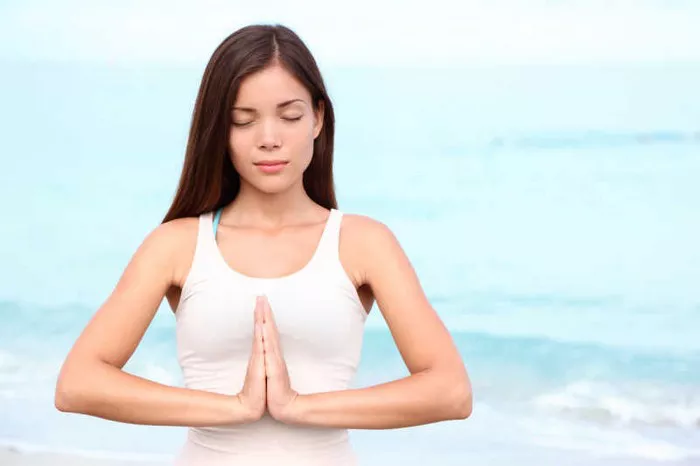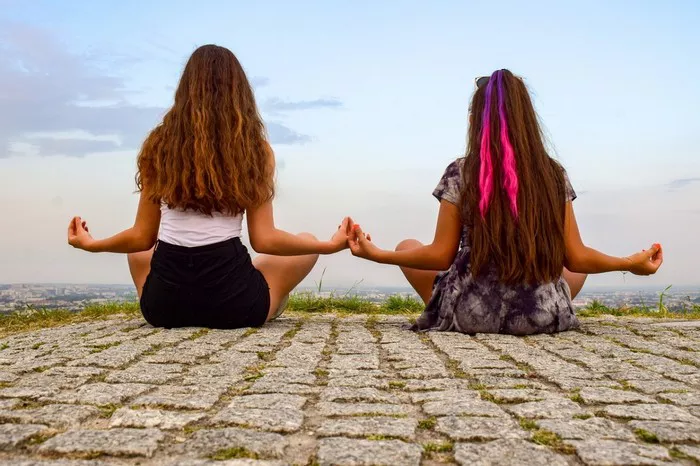Yoga is an ancient practice that has evolved over thousands of years, offering a multitude of physical and mental benefits. Among its many postures (known as asanas), laying down poses are especially popular due to their grounding nature, ability to promote relaxation, and potential for deep stretching and alignment. The laying down poses, often regarded as restorative or calming, are accessible to practitioners of all levels. In this article, we will explore one of the most commonly practiced laying down yoga poses, known as Savasana or Corpse Pose, as well as the various other laying down poses found in yoga.
Understanding the Concept of Laying Down Yoga Poses
Laying down poses in yoga involve reclining or lying flat on the mat with specific body alignment and breath work. These poses may vary in terms of energy exertion, with some focusing on relaxation, others on strength or flexibility, and many offering a combination of benefits. Some laying down poses, such as Savasana, aim to provide deep relaxation and restoration, while others, like Supta Baddha Konasana (Reclining Bound Angle Pose), focus on stretching the hips and releasing tension in the lower body.
The main appeal of laying down poses is that they allow the practitioner to move into a position of comfort while still maintaining mindful awareness of the breath and body. These poses are often incorporated at the beginning, during, or especially at the end of a yoga session to either prepare the body for practice or help the body and mind transition back to a state of calm.
The Most Common Laying Down Yoga Poses
While Savasana is the most well-known and widely practiced laying down pose, there are many other variations that serve different purposes within a yoga session. Let’s explore a few key laying down poses:
1. Savasana (Corpse Pose)
Savasana is often considered the most crucial of all yoga poses, despite appearing deceptively simple. The term “Savasana” is derived from the Sanskrit words “sava” meaning corpse and “asana” meaning pose or posture. In essence, this pose is about lying down in a way that resembles the stillness of a dead body, with the goal of inducing deep relaxation and tranquility.
How to Practice Savasana:
Lie flat on your back with your legs extended out and your feet falling open naturally. Your arms should rest alongside your body, palms facing upward.
Align your body symmetrically, ensuring that your head, neck, and spine are in a neutral position. Avoid arching the back or straining the neck.
Close your eyes and begin to breathe deeply through your nose. Allow your breath to flow naturally, without force.
Let go of tension in your body by consciously relaxing each part: from your toes to your head, release any tightness you may be holding. Stay in this position for 5-15 minutes, or for as long as the instructor or your body requires.
Benefits of Savasana:
Savasana is typically practiced at the end of a yoga class, allowing the body to rest after physical exertion. Its benefits include:
Stress reduction: It calms the nervous system and reduces anxiety and stress.
Mental clarity: As the body rests, the mind becomes still, improving focus and mental clarity.
Restoration: Helps in the restoration of energy and rebalancing of the body after a physically demanding practice.
Improved circulation: The deep relaxation encourages blood circulation, benefiting the whole body.
Enhancing awareness: Savasana teaches mindfulness by bringing the practitioner’s awareness to the present moment, letting go of external distractions.
2. Supta Baddha Konasana (Reclining Bound Angle Pose)
Another popular laying down pose is Supta Baddha Konasana, which targets the hips, thighs, and groin. In this posture, the soles of the feet are pressed together while the legs fall open in a butterfly shape. It is often used to release tension from the hips and prepare the body for deep rest.
How to Practice Supta Baddha Konasana:
Lie flat on your back with your legs extended.
Bring your feet together, letting your knees drop open to either side, forming a diamond shape with your legs.
Place your hands on your belly or by your sides, keeping your body relaxed.
If needed, place cushions or blankets under your knees for added comfort and support.
Breathe deeply, allowing the gentle stretch in your hips and groin to release tension.
Benefits of Supta Baddha Konasana:
Hip opener: This pose gently stretches the inner thighs and opens up the hip flexors.
Relaxation: It can be very soothing for the nervous system, especially when practiced with deep, mindful breathing.
Improves posture: The chest tends to open in this pose, which can counteract rounded shoulders or slumped posture.
Supports the pelvic region: The gentle stretching of the groin and pelvic area makes this pose a great option for both women and men to release accumulated tension.
3. Supta Matsyendrasana (Reclining Spinal Twist)
Spinal twists are common in yoga for their ability to enhance flexibility and detoxify the body. Supta Matsyendrasana is a reclining version of a classic twist that helps to release tension in the spine, stretch the back muscles, and stimulate the digestive system.
How to Practice Supta Matsyendrasana:
Lie on your back with your arms extended out to the sides in a T-shape.
Bend your knees, keeping your feet flat on the floor.
Bring your knees toward your chest, then slowly lower them to one side, ensuring your shoulders remain grounded on the mat.
Turn your head in the opposite direction of your knees to deepen the twist.
Hold the position for several breaths, then switch sides.
Benefits of Supta Matsyendrasana:
Spinal mobility: This twist helps to maintain and improve flexibility in the spine.
Relieves back tension: Regular practice of this pose can help alleviate lower back pain and stiffness.
Promotes digestion: The twisting motion massages the internal organs, encouraging better digestion and metabolism.
Detoxifying: The twist helps to flush out toxins from the body and promote healthy circulation.
4. Ananda Balasana (Happy Baby Pose)
Ananda Balasana, or Happy Baby Pose, is a playful yet effective pose that stretches the hips, inner thighs, and lower back. The pose is often performed on the back with both knees drawn toward the chest and the feet held with the hands, resembling a baby in a joyful position.
How to Practice Ananda Balasana:
Lie on your back and draw your knees toward your chest.
Grab the outsides of your feet with your hands, keeping the knees wide apart.
Press your feet upward, ensuring your ankles are stacked directly over your knees. The knees should remain bent.
Gently rock side to side if it feels comfortable to release tension in the lower back.
Breathe deeply and hold the position for several breaths.
Benefits of Ananda Balasana:
Stretches the hips and lower back: The pose helps to release tightness in the hips and relieves tension in the lower back.
Calms the nervous system: Gentle rocking can be soothing and grounding, helping to reduce stress.
Improves flexibility: This pose increases flexibility in the hips, thighs, and groin.
5. Supta Virasana (Reclining Hero Pose)
Supta Virasana is a reclining variation of Virasana (Hero Pose), a seated posture commonly practiced to stretch the quadriceps and open the hips. Supta Virasana takes the stretch to the next level by lying down, allowing for deeper opening and relaxation.
How to Practice Supta Virasana:
Kneel on the floor, keeping your legs together and your knees bent.
Sit back onto the floor, placing a cushion or bolster underneath your back for support.
Slowly lower your back toward the floor while keeping your legs in position.
Extend your arms overhead or rest them by your sides.
Hold the position for a few minutes while breathing deeply.
Benefits of Supta Virasana:
Deep stretch for the thighs: This pose intensely stretches the quadriceps and opens the hip flexors.
Improves posture: It helps counteract the effects of prolonged sitting and tight hip flexors.
Restorative: The use of props such as bolsters and cushions can make this a deeply restorative pose.
6. Viparita Karani (Legs Up the Wall Pose)
While Viparita Karani is not a full laying down pose in the traditional sense, it is considered one of the most restorative postures in yoga. In this pose, the legs are elevated against a wall, helping to promote circulation and reduce stress.
How to Practice Viparita Karani:
Sit next to a wall, with your legs extended straight in front of you.
Slowly lie back, bringing your legs up the wall as you adjust your position.
Relax your arms at your sides or place them on your belly.
Hold this position for 5 to 15 minutes, focusing on deep, calming breaths.
Benefits of Viparita Karani:
Improves circulation: Elevating the legs promotes blood flow back toward the heart, making this an excellent pose for reducing swelling and fatigue.
Reduces stress: It is deeply restorative and helps calm the nervous system.
Relieves lower back pain: Lying on the floor with the legs elevated can relieve pressure on the lower back.
Conclusion
Laying down yoga poses play a significant role in a well-rounded yoga practice. From the deeply restorative Savasana to the invigorating twists and hip openers, these poses provide a variety of benefits, including stress relief, increased flexibility, improved circulation, and enhanced mindfulness. Whether you are new to yoga or a seasoned practitioner, incorporating laying down poses into your routine can enhance your overall experience and promote a greater sense of well-being.
Understanding the names, techniques, and benefits of these poses will allow you to approach your practice with more knowledge and intentionality. If you’re looking for a way to deepen your practice, restore your body after a long day, or simply relax and rejuvenate, laying down yoga poses should be a key component of your yoga journey.
Related Topics:




